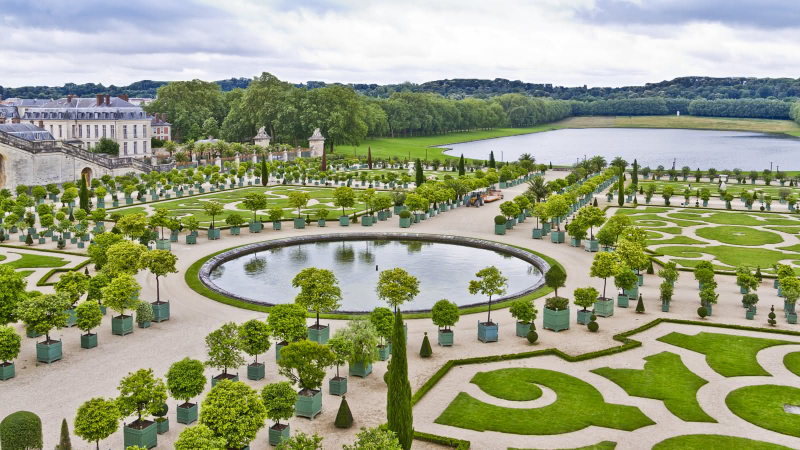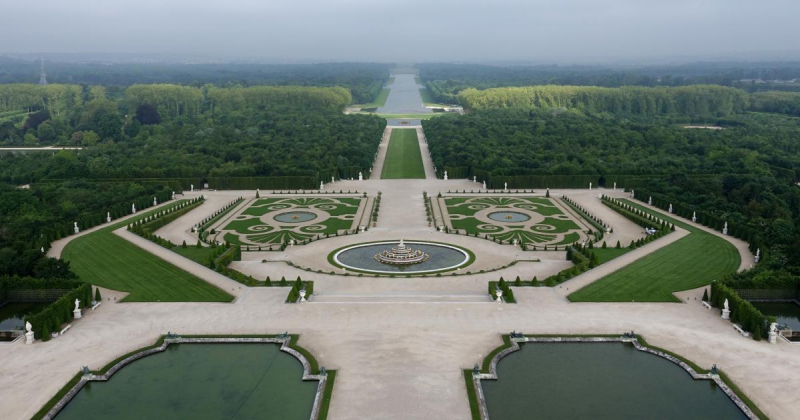Gardens of Versailles
The first position on the list of the most magnificent historic gardens around the world is the gardens of Versailles. The Domaine royal de Versailles, the royal demesne of the château of Versailles, is now partially occupied by the Gardens of Versailles. The gardens, which are 800 hectares in size and are located to the west of the palace, are largely designed in the traditional French formal garden style that André Le Nôtre mastered there. The Versailles Plain (a designated wildlife preserve) to the west, the Satory Forest to the south, the urban areas of Versailles and Le Chesnay to the east, the National Arboretum de Chèvreloup to the north, and the urban areas of Le Chesnay and Versailles to the east and northeast, respectively, form the other borders of the gardens.
The fountains, which are scattered around the garden, are in addition to the parterres, sculptures, and lawns that have been meticulously maintained. The fountains, which date back to Louis XIV's reign and continue to utilize a large portion of the hydraulic system in place during the Ancien Régime, help to distinguish the gardens of Versailles from others. The museum management sponsors the Grandes Eaux, weekend spectacles that take place from late spring to early autumn and feature all of the fountains in the gardens operating at full capacity. The Grand Canal, which André Le Nôtre created, is the Gardens of Versailles' crowning achievement. The Grand Trianon was constructed in the Gardens as well to provide Sun King the seclusion he desired.
The Versailles Gardens are one of the most popular public destinations in France, with more than six million visitors annually. They are managed by the Public Establishment of the Palace, Museum, and National Estate of Versailles, an independent public organization operating under the direction of the French Ministry of Culture.
Location: Versailles, France











